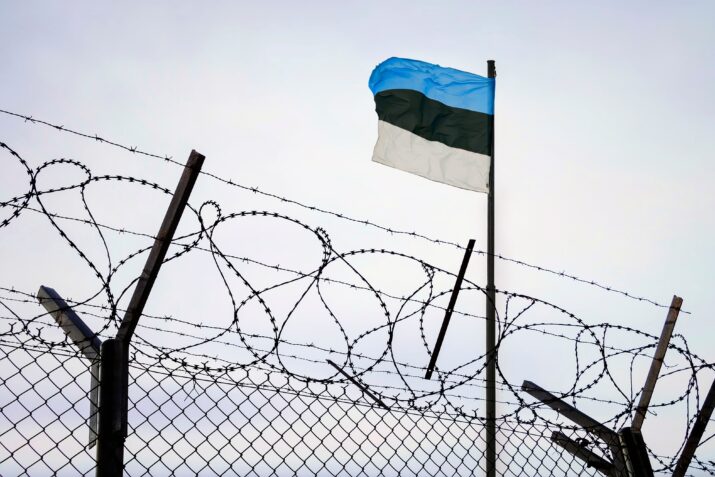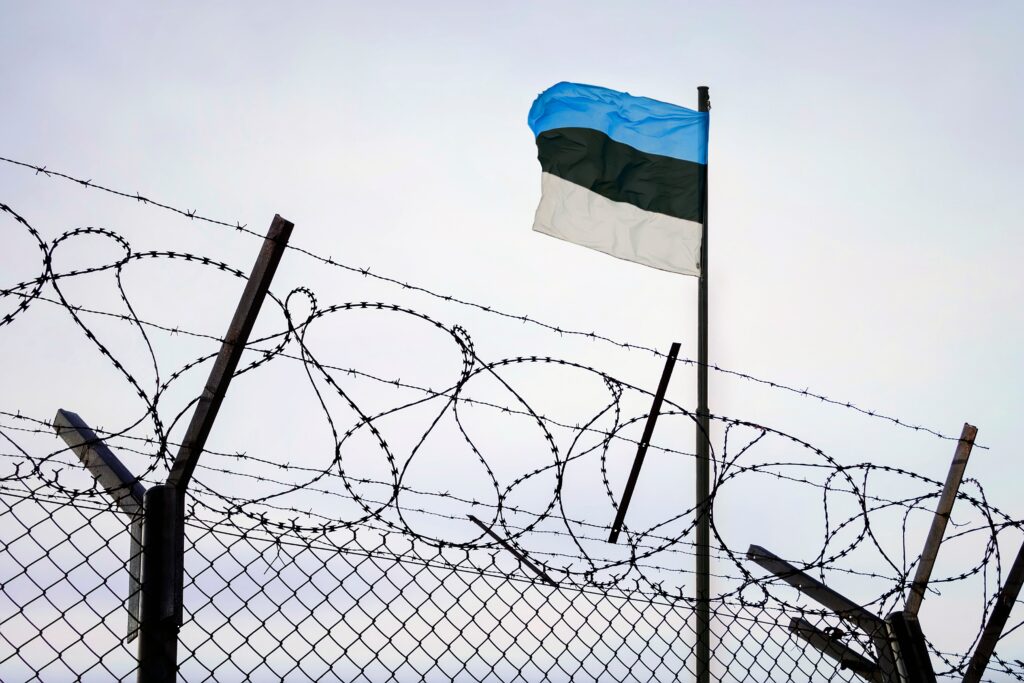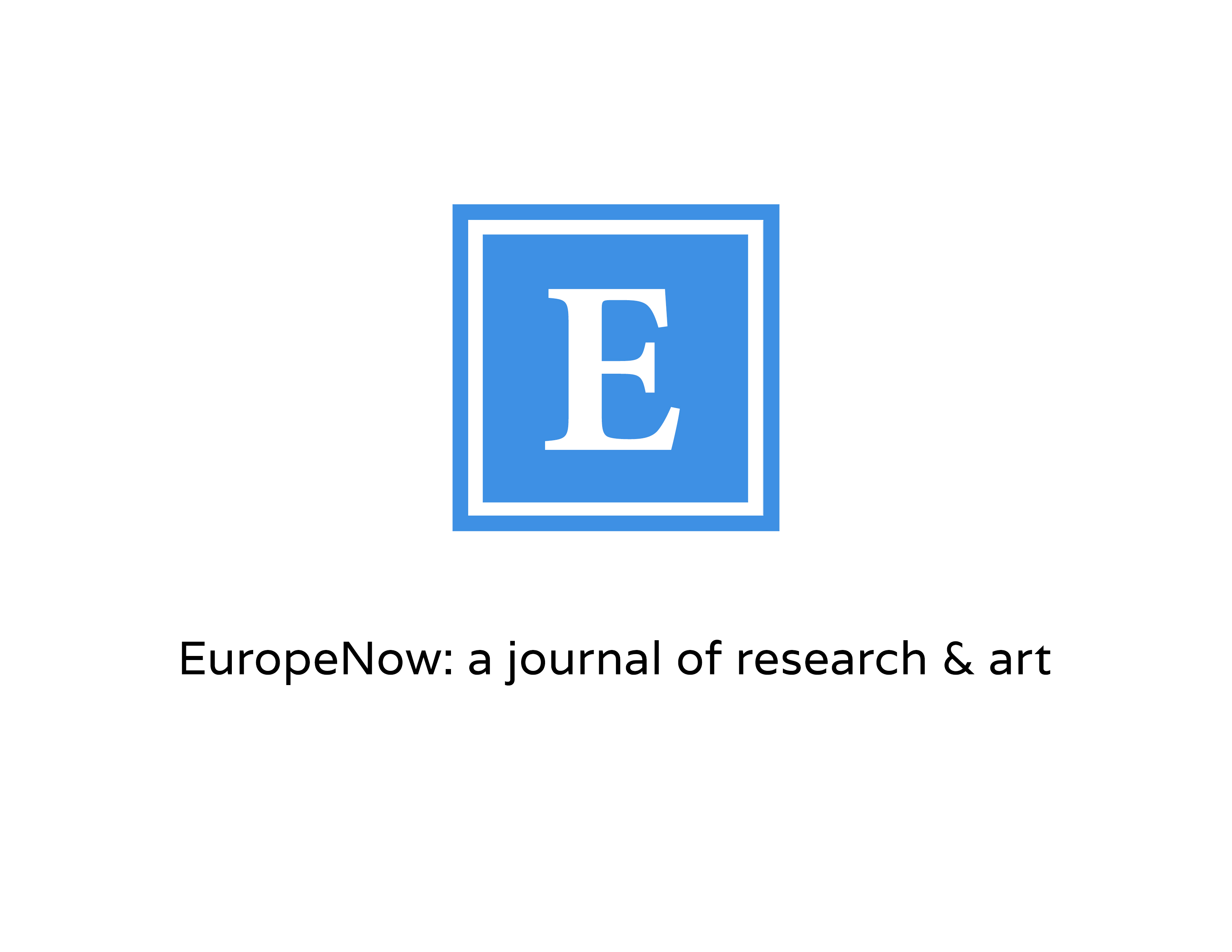
The EU’s Citizenship Double Standard: Estonia’s Stateless Russians and the Limits of European Liberalism

By Nicole Monette
An estimated ten to fifteen million people around the world are currently stateless; by definition, they are “not recognized as nationals by any country,” and oftentimes lack access to education, healthcare, housing, employment, and political rights as a result. Many are also at risk of exploitation and detention, as they do not benefit from the protection of citizenship. While stateless people are found across the globe, significant stateless populations are concentrated in a few specific countries. In Europe, large stateless populations are still found in former Soviet republics; many people “fell through the cracks” after the dissolution of the Soviet Union in 1991 “when they could not acquire nationality from any successor states.” In other words, many were only considered Soviet citizens, and they were unable to acquire citizenship in their new country post-independence. These individuals found themselves citizens only of a country that no longer existed.
Estonia’s Significant Stateless Population
Today, around five percent of Estonia’s population remains stateless; most of these individuals are ethnic Russians. Estonia “has yet to comply with” many “international requirements” regarding statelessness, leaving the country with the tenth-largest stateless population in the world, despite having a total population of just less than 1.4 million. While human rights organizations may urge Estonia to soften its citizenship laws to be more inclusive of the country’s stateless ethnic Russian population (particularly children), with Russia’s continuous climb toward harsher authoritarianism and its recent violent actions in the region, Estonia may be less likely in the near future to alter its citizenship laws in any way to make it easier for Russians to gain political rights. Similarly, some Russians in Estonia feel strong ties to Russia, increasing Estonians’ concern about Russians’ loyalty toward one country over another, especially in the midst of the heightened tension between Russia and Europe. Many Estonian Russians who do not outright support Putin feel a sense of ideological confusion, and even face “social pressure to stick with their ethnic group.” Furthermore, “few Russians in Estonia’s free and democratic society are ready” to label Russia as an aggressor. Put simply, the “sizable” Russian minority population is “sometimes at odds with the national governments” of the Baltic states, and “concerns” exist that “Moscow could seek to exploit these differences to destabilize the countries.”
Recognizing Estonia’s history within the Soviet Union is essential to understanding the context of statelessness today. In 1940, the Republic of Estonia was “annexed to the Soviet Union as the Estonian Soviet Socialist Republic under threat of military force,” and, as a result, Estonian citizens became Soviet citizens––Estonian citizenship was rendered nonexistent. While “Estonian” was still denoted on passports for travel within the Soviet Union, passports for travel abroad made no mention of ethnicity, meaning all citizens of the Soviet Union were grouped together, regardless of ethnicity. Although the ethnicity of “Estonian” was recognized on internal passports pre-dissolution, this “inscription could not be automatically converted into Estonian nationality after independence.” By law, since 1992, “only pre-1940 nationals and their descendants”––the year Estonia became part of the Soviet Union––“were entitled to acquire Estonian nationality by registration,” regardless of their actual ethnic identity. As a result, any individuals who arrived in Estonia after 1940 (mainly Russians) “were automatically excluded from Estonian nationality.” In 1992, those falling under this category made up nearly a third of Estonia’s entire population.
Estonia’s Citizenship Laws: Aimed to Protect the Estonian Ethnicity
Children were heavily affected by these exclusionary citizenship laws. The initial version of the 1995 Citizenship Act stipulated that “children of stateless parents born in Estonia could not acquire Estonian nationality after birth,” which violated both the International Covenant of Civil and Political Rights and the Convention on the Rights of the Child (Estonia ratified both). However, measures were taken at a later date to ease some restrictions. In 1998, following some recommendations from “international actors,” an amendment to the Citizenship Act was adopted whereby “children under the age of fifteen born on Estonian territory” after February 1992 could “acquire the Estonian nationality on the basis of a declaration if their parents [were] stateless and [had] been legal residents of Estonia during the previous five years.” Ironically, the amendment recognized the ability of children of stateless parents to gain citizenship, but not the stateless parents themselves. However, children born before 1992 were excluded from the amendment.
Estonia’s nationality laws have been described as biased against the country’s ethnic Russian population (even as this may be a sensitive topic). Citizenship requirements include an Estonian language exam, which poses a major obstacle to Estonia’s Russian speakers and has been criticized as “discriminatory” by Human Rights Watch. This requirement reinforces the divide between those of Estonian and Russian ethnicity. In addition to language, an individual who wishes to acquire Estonian citizenship must “have knowledge of… the Constitution of the Republic of Estonia and the Citizenship Act.” While many ethnic Russians living in Estonia have considered the country’s citizenship policies to be “unfair,” Estonia’s political elite originally believed that excluding Soviet-era newcomers from gaining citizenship post-independence “served the interests of the survival of the Estonian ethnic nation and its culture.” In other words, in the early 1990s, Russians were still viewed as a threat to the Estonian people and nation, as Estonians saw the former Soviet Union as their decades-long oppressor. Even after achieving independence, that belief was too deeply rooted to disappear completely. These citizenship laws were designed with the Estonian nation in mind. The newly liberated Estonia celebrated the independence of the Estonian ethnicity as well as nationality. Estonians were no longer grouped together with Latvians, Ukrainians, Kazakhs, and others under the overarching nationality of “Soviet.” They were free to be officially, internationally recognized as “Estonian.” They were no longer invisible to the outside world. This was a great source of pride, which in turn caused sentiments of discrimination toward those living in Estonia who were not ethnically Estonian, who did not share a long-standing, common ethnic heritage––especially those who shared the same ethnicity as the former oppressor. The so-called protection of the Estonian ethnicity––for so long overshadowed by forced participation in the multiethnic empire––became crucial to Estonia’s newly independent government. As a result, citizenship and ethnicity in the Estonian state became deeply intertwined.
Estonia was able to acquire official membership in the European Union in 2004 despite its discriminatory citizenship laws. Estonians ultimately “interpreted the admission to the EU as the ultimate international approval of [their] nationality policies.” The EU and others in the international community simply stopped advising Estonia on how it should structure its citizenship laws. Russia, however, “has not dropped the problem of statelessness in Estonia from its political agenda.” Russia’s ability to “internationalise” this issue remains to be seen, as over the years Russia’s relationship with the EU has become increasingly strained. However, it would be to Russia’s advantage to have its people in Estonia gain citizenship and national voting rights, giving Russians in Estonia a significant political voice. But throughout the 2000s, Estonian domestic politics made clear the intent to keep citizenship laws more or less stable. Estonia’s mainstream parties “have regularly declared prior to national elections that, regardless of the election results, the Citizenship Act and the corresponding policies will not be changed,” demonstrating an unwillingness to alter the viewpoint that citizenship in Estonia should be rooted in ethnicity and culture as a way to protect the “survival of the Estonian ethnic nation.” One former Estonian minister even stated that the “ultimate hope” for the future of non-ethnic Estonians in the country was that “a third or so will become Estonian citizens, a third may remain here with Russian citizenship, and at least a third will leave.”
The Long-Standing Divide Between Russians and Estonians and its Contemporary Implications
The Soviet Union at one time consisted of fifteen different republics. So why has discrimination against ethnic Russians in Estonia been so significant, especially compared to the other Baltic countries of Latvia and Lithuania? The answer can be found partly in the vast cultural differences that exist between Russia and Estonia. Linguistically, Estonian is closer to Finnish than Russian, while other Baltic languages are distantly related to Russian (during Soviet times, Estonians tended to use Russian in their daily lives with much less frequency than Latvians and Lithuanians). Additionally, the Soviet policy of “Russification,” implemented across all republics, “was one of the toughest in Estonia” compared to other republics. In other words, Soviet leadership attempted to “Russify” Estonia more aggressively than other republics. A major reason for this Russification was “preventing resistance to the central authority” in Moscow. Essentially, the belief was that the more homogenous the many ethnicities of the Soviet Union appeared, the more compliant all republics would be.
Partly as a result of Estonians’ resistance to Russification in their country during the Soviet era, much of Estonia’s Russian community “remains quite isolated” simply because “many ethnic Russians have stronger links to their historic homeland than to their country of permanent residence.” This may be especially true in border cities, such as Narva, with a “95 percent Russian-speaking” population. In a city like Narva, many residents hesitate to condemn Putin’s actions in Ukraine, continue to watch Russian state TV, and remain heavily influenced by Russian propaganda. As for language, in Narva “there is almost no need to learn Estonian.”
Russia’s increasingly antagonistic behavior in recent years has only served to widen the divide between ethnic Estonians and ethnic Russians in Estonia, “further exacerbating the isolation” of ethnic Russians and “pushing them deeper into Russia’s sphere of influence.” A significant percentage of Russians in Estonia remain very pro-Russia; they distrust and feel a strong sense of pessimism toward Estonian state authorities, and they actively consume Russian (instead of Estonian) media. Many “consider Russia their only homeland” and “are not interested in Estonian life.” This leads to the question of whether ethnic Russians in Estonia even desire to completely integrate into Estonian culture and become citizens. Doing so would mean effectively distancing themselves from their own language and culture––at least somewhat. There is even concern among Estonians, regarding language integration, that “the linguistic assimilation of a large Russian-speaking minority” would be “impossible without distorting the form of Estonian spoken by ethnic Estonians.” In other words, while Estonian language acquisition is currently necessary to gain citizenship, there may exist a fear among Estonians that if Russians were to learn their language, they may alter it over time.
Estonia is now a member of both the EU and NATO and has become very much a European country, while Russia has continued to spiral down the path of authoritarianism and violence. This stark contrast between modern Estonia and Russia may only continue to pull ethnic Russians farther from Estonian culture and politics. Estonia’s Russians tend to perceive the government’s attempts at integration as a way to “assimilate them in order to ensure the dominance of the ethnic majority culture”––potentially reminiscent of Russification. When the Soviet Union collapsed and an independent Estonian state was established, ethnic Russians in Estonia experienced “not only a loss in status but also the need to fully reassess the bases of [their] identity.” Russians had lost their “privileged position” and were “[n]o longer part of the dominant imperial nationality.” Ironically, the dissolution of the Soviet Union may have actually strengthened Russian ethnic identity within Estonia.
In the future, the status of stateless ethnic Russians in Estonia may not change significantly. Evidence suggests that recent developments in global affairs (namely Russia’s 2022 full-scale invasion of Ukraine, another former Soviet republic) have strengthened Estonia’s discriminatory beliefs toward ethnic Russians and their ability to achieve Estonian citizenship. As POLITICO reported in 2024, both Estonia and Latvia—its Baltic neighbor to the south—“clamped down on their Russian-speaking minorities” in the wake of the full-scale invasion by “removing Soviet monuments, making elderly citizens take a language test to avoid expulsion, and banning Russian content on public broadcasters.” If Estonians generally perceive ethnic Russians to be more loyal to Russia, Estonians will be even more unwilling to allow Russians to gain citizenship and political rights, such as the right to vote in national elections. If potentially Putin-sympathetic Russians become citizens, they will suddenly have a say in Estonian political decisions through voting. Since Estonia has, for decades after independence, distanced itself politically from Russia, it would most likely be uninterested in allowing ethnic Russians to exercise political power in the country as Russia is now leaning more authoritarian and anti-European. Directly after independence, these policies aimed at protecting Estonian ethnicity resulted in political discrimination of ethnic Russians as well as nationality-based discrimination. Russians found themselves without the right to vote nationally or the right to be “elected in the parliamentary election” of September 1992; this led to their overall exclusion from political participation. By design, ethnic Russians had no say in any political matters at the national level.
Earlier this year, the Estonian parliament (the Riigikogu) voted nearly unanimously to amend its constitution to “strip” both Russian and Belarussian citizens of the right to vote, according to Estonian media ERR News. As a result of the amendment, the 2025 municipal elections (which took place on October 19), were “open to Estonian and EU citizens, as well as stateless residents. Starting from the next local elections after this one, only Estonian and EU citizens will be eligible to vote.” Le Monde reported that the measure was “proposed in response to security concerns over Russia’s war in Ukraine.” Stateless persons, known as “grey passport holders,” never held the right to vote in national elections, meaning local elections constituted one of their main avenues for political expression. While Estonian President Alar Karis signed the constitutional amendment, he “hope[d] the Riigikogu [would] ensure Estonia’s internal peace is not harmed by the decision” to revoke the right to vote locally, as stated in Baltic News. Prime Minister Kristen Michal of the Reform Party called the amendment a “victory for all,” writing on social media that the “decisions in our local life won’t be made by the citizens of the aggressor states, but we’ll decide by ourselves.” Voting rights, according to Le Monde, “are just the latest symbolic act of cutting ties with Russia.”
Will Statelessness in Estonia Ever End?
In order for integration to truly and successfully occur, the minority group must agree “to adopt and implement culture, tradition, and what seems to be the most significant language of a dominant group,” while the majority group must accept “and tolerate the cultural, traditional, and linguistic practices of the minority group.” In the case of Estonia, Russians (the minority group) tend to keep to themselves, speak their own language, and feel strong ties to Russia. On the other hand, Estonians (the majority group) tend to view Russia as a threat in both a modern and historical context. More open-minded youth may pave the way forward toward closer relations between ethnic Estonians and ethnic Russians. “[S]ignificant obstacles” in the way of better relations that have spanned generations still remain, such as a “lack of knowledge and willingness to learn Estonian” among the Russian population, including youth. Young people in Estonia still express the opinion that Estonians and Russians “grow up separately,” even in the same cities (but this divide is more pronounced in the eastern regions of the country, closer to the Russian border). Even Estonia’s thriving, modern capital city, Tallinn, demonstrates a linguistic and ethnic division. “[N]ative Estonian speakers increasingly live in different neighbourhoods to the city’s native Russian-speaking populations,” a manifestation of segregation that has actually increased since the Soviet era. Tallinn’s residents are divided approximately in half between native Estonian and native Russian speakers. Since Estonia’s independence, “Russian speakers have converged on Lasnamäe,” an eastern neighborhood in Tallinn; approximately a “third of native Russian speaking Tallinnites lived in Lasnamäe in 1989, whereas almost half did in 2019. “At the same time,” according to Eurozine, “the proportion of Russian speakers as a percentage of the whole population of Lasnamäe grew” from 64 percent to 75 percent.
Statelessness in Estonia has affected the country’s ethnic Russian minority population since it achieved independence from the Soviet Union and created new citizenship laws heavily based on ethnicity and culture. Many political elites in Estonia viewed ethnic Russians as a threat to Estonian culture after suffering years of oppression under policies of “Russification” aimed at blending the multiple ethnicities of the Soviet Union into one. Given Russia’s continued authoritarianism and increasing aggression in the region, Estonia may be very unwilling to soften its citizenship laws to help stateless ethnic Russians gain citizenship and voting rights, fearing these individuals may hold strong ties to Russia and be more loyal to it than to Estonia. Considering both historical and current contexts—as they are equally important—statelessness among Russians in Estonia will likely exist well into the future. This is especially pertinent to follow in the later months of 2025, as the UNHCR set a goal to end statelessness by 2024—it is very obvious now that this goal was not only lofty, but likely unfeasible to achieve. With statelessness among Russians in Estonia having endured for decades, and with Estonia’s increasing uneasiness with Russia post-2022, it’s impossible to say whether currently stateless Russians in Estonia will ever obtain citizenship at all.
Published on October 27, 2025
Author Bio
Nicole Monette is a journalist covering post-Soviet Central and Eastern Europe and political shifts across the EU. She recently completed an MA in Global Journalism and European & Mediterranean Studies at New York University, where she researched cultural and economic issues in Italy and political movements in eastern Germany. She also holds an MS in Global Affairs from NYU, with a focus on post-independence Ukraine. She has studied in France, Spain, and Italy.



